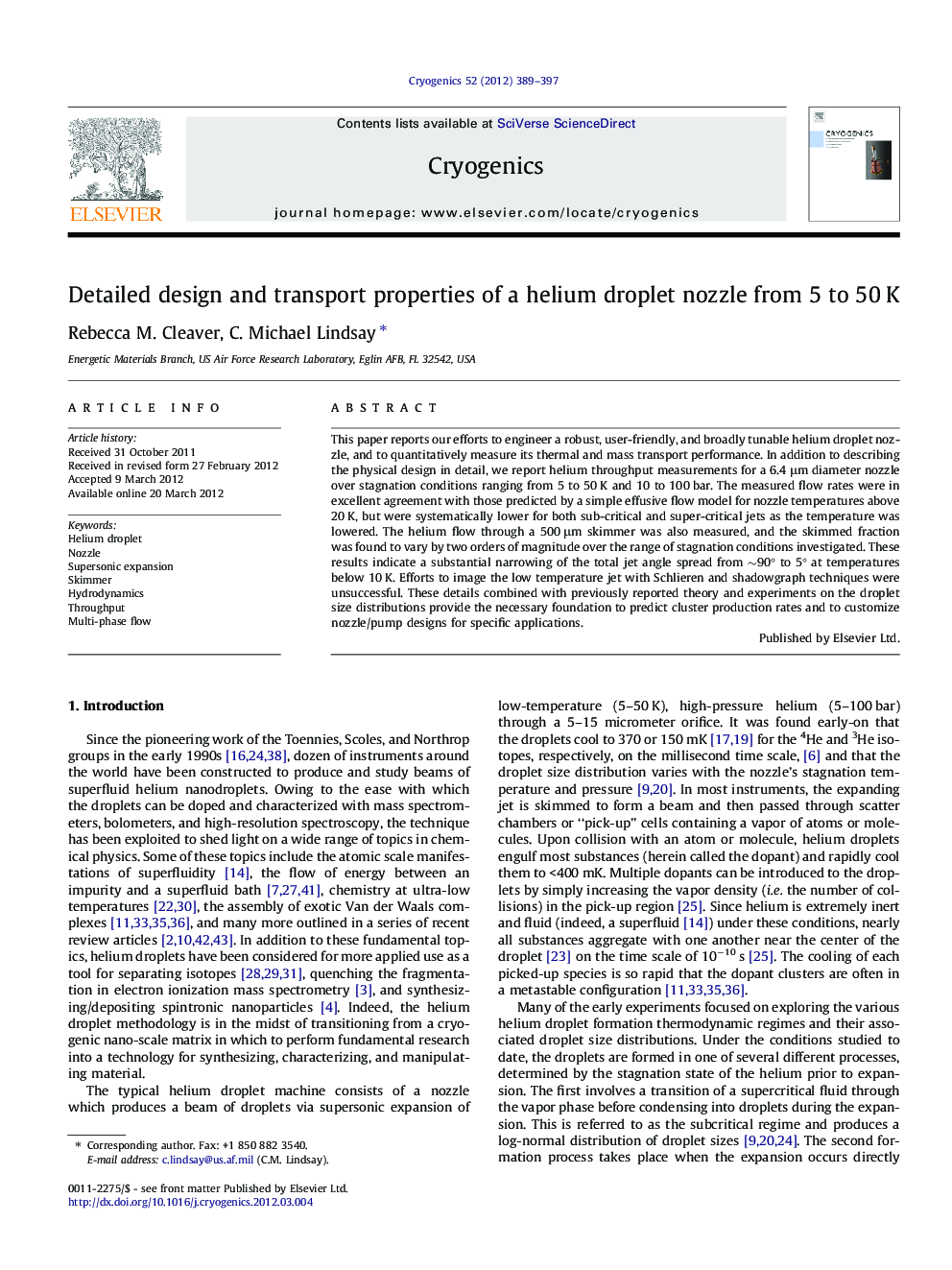| Article ID | Journal | Published Year | Pages | File Type |
|---|---|---|---|---|
| 1507538 | Cryogenics | 2012 | 9 Pages |
This paper reports our efforts to engineer a robust, user-friendly, and broadly tunable helium droplet nozzle, and to quantitatively measure its thermal and mass transport performance. In addition to describing the physical design in detail, we report helium throughput measurements for a 6.4 μm diameter nozzle over stagnation conditions ranging from 5 to 50 K and 10 to 100 bar. The measured flow rates were in excellent agreement with those predicted by a simple effusive flow model for nozzle temperatures above 20 K, but were systematically lower for both sub-critical and super-critical jets as the temperature was lowered. The helium flow through a 500 μm skimmer was also measured, and the skimmed fraction was found to vary by two orders of magnitude over the range of stagnation conditions investigated. These results indicate a substantial narrowing of the total jet angle spread from ∼90° to 5° at temperatures below 10 K. Efforts to image the low temperature jet with Schlieren and shadowgraph techniques were unsuccessful. These details combined with previously reported theory and experiments on the droplet size distributions provide the necessary foundation to predict cluster production rates and to customize nozzle/pump designs for specific applications.
► Design of a robust and broadly tunable helium droplet nozzle is reported. ► Thermal and mass transport measured experimentally from 5 to 50 K, 10 to 100 bar. ► Measured nozzle flow rates in excellent agreement with effusive model above 20 K. ► Total jet angle spread varies from ∼90° to 5° at temperatures below 10 K. ► Droplet flow suggests two optimal conditions for dopant nanoparticle production.
